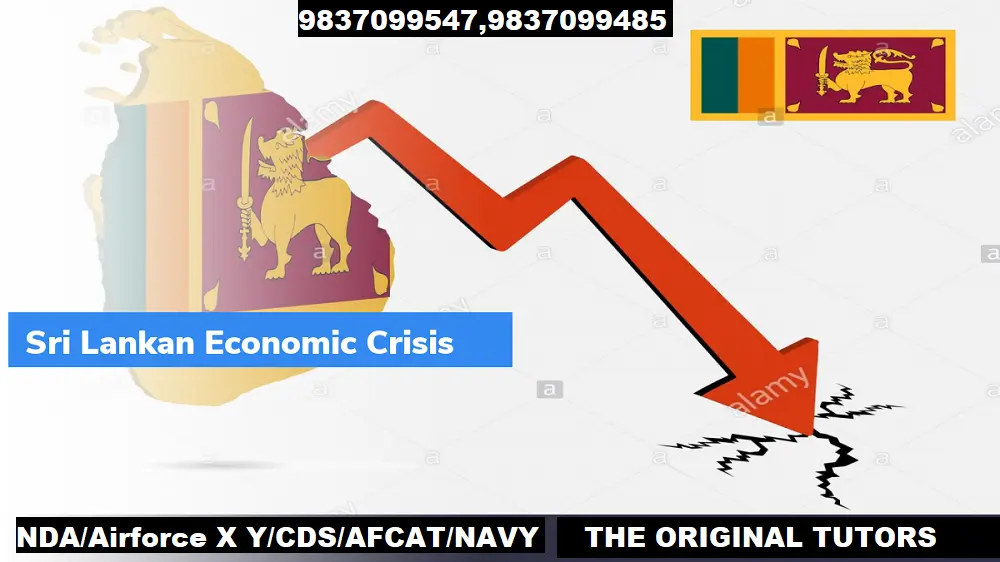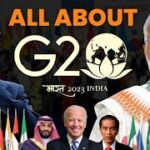Srilanka’s Economic Crisis

What’s happening in Sri Lanka and how did the Srilanka’s economic crisis start?
Many believe Sri Lanka’s economic relations with China are a main driver behind the crisis. The United States has called this phenomenon “debt-trap diplomacy”.
Srilanka’s Economic Crisis a recent topic of Group Discussion for all SSB, MBA aspirants. This post is going to talk about the causes of the Srilanka’s Economic crisis and India’s role as the country’s immediate neighbour. On 31st August 2021, Sri Lanka government declared a state of economic emergency as Srilanka’s Economic Crisis was on its zenith.

Reasons for Srilanka’s Economic Crisis:
In January 2021, the Sri Lankan Government declared officially that the country was hit by the worst economic crisis in its 73 year history. The island nation of Sri Lanka is in the midst of one of the worst economic crises it’s ever seen. It has just defaulted on its foreign debts for the first time since its independence, and the country’s 22 million people are facing crippling 12 hours power cuts, and an extreme scarcity of food, fuel and other essential items such as medicines.
The current Sri Lanka’s economic crisis is the product of the historical imbalances in the economic structure, the International Monetary Fund (IMF)’s loan-related conditionality’s and the misguided policies of authoritarian rulers.

- Background: When Sri Lanka emerged from a 26 year long civil war in 2009, its post-war GDP growth was reasonably high at 8-9% per annum till 2012.
- However, its average GDP growth rate almost halved after 2013 as global commodity prices fell, exports slowed down and imports rose.
- Sri Lanka’s budget deficits were high during the war and the global financial crisis of 2008 drained its forex reserves which led to the country borrowing a loan of $2.6 billion loan from the IMF in 2009.
- It again approached the IMF in 2016 for another US$1.5 billion loan, however the conditionality’s of the IMF further deteriorated Sri Lanka’s economic health.
Recent Economic Shocks: Sri Lanka is heavily dependent on tourism. 10% of the country’s GDP (Gross Domestic Product) comes with tourism. With tourism, the country fills foreign exchange reserves and uses them to import goods. But due to the Covid-19 pandemic, the tourism industry was hit very badly and that impacted Sri Lanka too. Moreover, as the number of covid cases and deaths is rising in Sri Lanka, tourism was even more negatively affected. That resulted in a shortage of foreign exchange reserves. The Easter bomb blasts of April 2019 in churches in Colombo resulting in 253 casualties, consequently, dropped the number of tourists sharply leading to a decline in foreign exchange reserves and added fuel to the fire in these conditions.
- Value-added tax rates (akin to some nations’ goods and services taxes) were cut from 15% to 8%. Other indirect taxes such as the nation building tax, the pay-as-you-earn tax and economic service charges were abolished. Corporate tax rates were reduced from 28% to 24%. About 2% of the gross domestic product was lost in revenues because of these tax cuts.
- Sri Lanka’s Fertiliser Ban: In 2021, all fertiliser imports were completely banned and it was declared that Sri Lanka would become a 100% organic farming nation overnight.
- This overnight shift to organic fertilisers heavily impacted food production.
- Even though organic farming has plenty of benefits for the environment and for the health of people, it gives very less yield. Less produce contributed to even more food shortages. That resulted in heavy demand and low supply and hence the prices rose sharply, which caused inflation.
- Moreover, due to less yield, Sri Lanka is forced to import more food, which put even more pressure on foreign exchange reserves.
- Tea and spices are one of the main exports from Sri Lanka. Exports fetch foreign currency. But the switch to organic farming may result in a low yield of tea and spices. Many fear that it may result in fewer exports and that may worsen the present situation
- Consequently, the Sri Lankan President declared an economic emergency for controlling rising food prices, a depreciating currency, and rapidly depleting forex reserves.
- The lack of foreign currency, coupled with the disastrous overnight ban on chemical fertilisers and pesticides, has sent food prices soaring. Inflation is currently over 15% and is forecast to average 17.5%, pushing millions of poorer Sri Lankans to the brink.
- The Hambantota Port was another white elephant project by the present government to shorten its economic woes. Instead it only further increased the debt problem that Sri Lanka faced as it had taken $1 billion from China.
- The construction of the Hambantota port was financed by the Chinese Exim Bank. The port was running losses, so Sri Lanka leased out the port for 99 years to the Chinese Merchant’s Group, which paid Sri Lanka US$1.12 billion.
- The ongoing Russia-Ukraine War is also a factor which is affecting the already precarious economic condition of Sri Lanka.
- The reason is that the both the Sri Lankan tourism relies on arrivals from Russia and Ukraine
- Russia is also the second biggest market to Sri Lanka when it comes to tea exports.
- Thus, the war in the Ukraine put a serious dent in the path of economic recovery of Srilanka.
India’s Role in Srilanka’s Economic Crisis
- Sri Lanka sought both China’s and India’s help in this crisis. In this context, India has proven more reliable than China.
- India has taken advantage of this opportunity to improve its economic presence in the country, a counter balance to the increasing Chinese presence in the Indian ocean
- The line of credit extended by India ($400 million in China and $1 billion in March) can lead to India possibly becoming the top source of imports for Sri Lanka.
- The crisis has also allowed India to further its geopolitical interests by increasing its presence in strategically important places in Sri Lanka.
- On March 18, 2022 India extended a USD 1 billion line of credit to Sri Lanka on Thursday to help the country deal with the economic crisis.
- Preventing Illegal Refuge: The state of Tamil Nadu has already started feeling the impact of the crisis with the reported arrival of 16 persons from Sri Lanka through illegal means.
- Tamil Nadu was home to nearly three lakh refugees after the anti-Tamil pogrom of 1983.
- The authorities, both in India and Sri Lanka, should ensure that the present crisis is not used to step up smuggling activities and trafficking or whip up emotions in both countries.
Way Forward for Sri Lanka

The government should take measures for economic recovery of the country as soon as the shortage of certain essential commodities ends, which is expected before the start of the Sinhala-Tamil New Year (in mid-April).
- The president of Sri Lanka ordered the army to tackle hoarders of food items. Some people hoard food items, which can lead to price rises.
- The government capped the price of food items, which resulted in the selling of staple food items at normal prices.
- Sri Lanka’s central bank prohibited traders from exchanging more than 200 Sri Lankan rupees for an American dollar to prevent the further depreciation of the currency.
- The International Monetary Fund has announced an emergency relief package worth $787 million.
- It would be best to raise domestic tax revenue and shrink government expenditure to limit borrowing, particularly sovereign borrowing from external sources.
- Tough measures should be taken for restructuring the administration of concessions and subsidies.
For important Current Affairs, GD Topics and tips of written examinations which helps you in AirForce X/Y, NAVY, NDA, CDS, AFCAT & SSB: http://www.airforcecoaching.in/airforce-x-y-gd-topics/
For other GD Topics or any queries
Contact: The Original Tutors
For any help Visit: http://www.theoriginaltutors.com

















